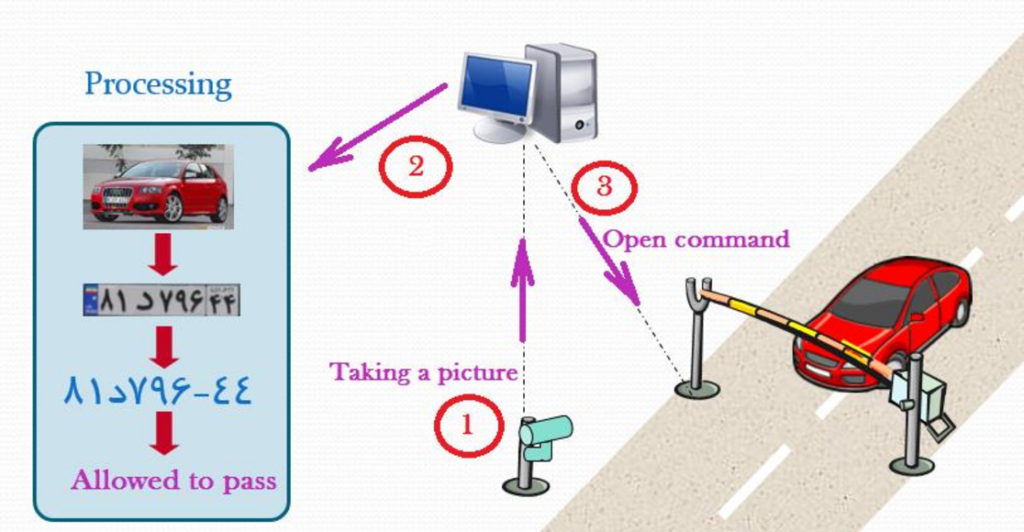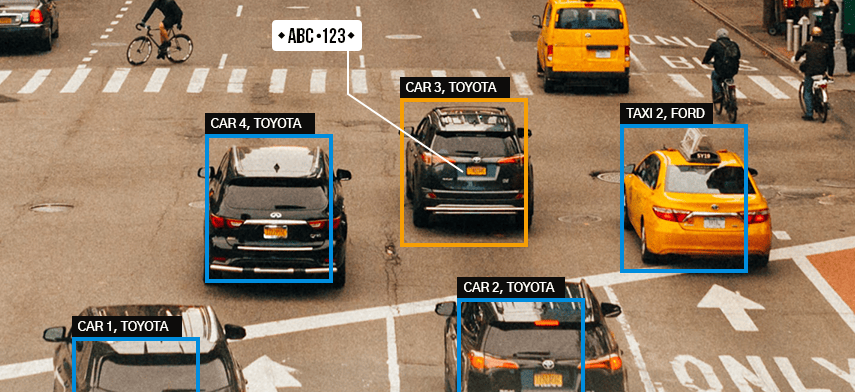As AI technology continues to grow and change every facet of our lives, license plate recognition (LPR) is undergoing an exciting evolution. This technology was first introduced as a way for cities and municipalities to detect drivers who were speeding or neglecting to accurately pay tolls. While many drivers might not appreciate the world of LPR, this technology has uses far beyond catching you in a traffic offense. Here’s how LPR is changing the way we live.
Securing Parking Facilities
While you might not love the ticket you got from that traffic cam, you should definitely love the enhanced security you’ll soon be enjoying in your building’s parking structure. ALPR license plate recognition is now being used to ensure that only residents and invited guests are able to get through security gates in private parking facilities. This allows residents the peace of mind to know that no intruders or unwanted persons will be able to get onto the premises. This technology can also be used to alert the police if a vehicle belonging to an intruder has managed to get through the gates.
The Mechanics of LPR: Unveiling the Technology Behind the Scenes
As we appreciate the benefits of LPR in securing parking facilities, it’s worth taking a moment to understand the intricate mechanics driving this technology. License plate recognition, rooted in computer vision and machine learning, operates through a series of sophisticated steps:
- Image Acquisition:
- LPR systems commence with the acquisition of images or video footage containing vehicles and their license plates, often sourced from strategically placed surveillance cameras.
- Pre-processing and Standardization:
- Raw images undergo pre-processing to enhance clarity and reduce noise, ensuring a standardized input for subsequent stages.
- License Plate Localization and Character Segmentation:
- Cutting-edge algorithms, including object detection and CNNs, locate the license plate within the image and segment individual characters, overcoming design and font variations.
- Optical Character Recognition (OCR):
- OCR, a cornerstone of LPR, interprets and converts segmented characters into machine-readable text, utilizing advanced models like RNNs or transformer architectures.
- Data Integration and Machine Learning Training:
- Recognized license plate information is integrated into databases or connected systems for real-time decision-making. Machine learning training on diverse datasets continually enhances accuracy.

The Synergy of LPR and Face Recognition: Precision in Driver Identification
A common limitation of License Plate Recognition (LPR) is its focus on identifying license plates rather than drivers. However, advancements in technology now allow the seamless integration of LPR with face recognition, significantly enhancing accuracy.
Integration Highlights:
- Driver Association:
- Face recognition complements LPR by associating the identified license plate with the specific driver, eliminating misattribution in cases of borrowed vehicles.
- Multi-Modal Identification:
- This integrated system combines license plate data with facial features, enabling precise multi-modal identification for a nuanced understanding of traffic violations.
- Enhanced Accountability:
- LPR now goes beyond recognizing the vehicle, extending to identify the driver, ensuring accountability aligns with the individual behind the wheel.
- Security and Law Enforcement:
- The integration enhances security and law enforcement applications, particularly in access control systems, restricting entry to authorized drivers.
User-Friendly Implementation:
- Advances in user-friendly interfaces make integrating face recognition with LPR accessible across various domains without imposing technical complexities.
Paradigm Shift in Driver Identification:
The fusion of face recognition with LPR signifies a paradigm shift in driver identification, revolutionizing traffic management and security with a more accurate and fair approach.
Next Steps: Implementing the Synergy
Envision a future where both vehicles and drivers are accurately identified, transforming the landscape of law enforcement and access control. Integrate this section seamlessly into your narrative, following the initial discussion of LPR’s role in securing parking facilities.

Potentially Saving Lives: LPR in Rapid Response for Missing Persons
In situations where every second counts, License Plate Recognition (LPR) technology emerges as a crucial tool in enhancing rapid response efforts for missing persons. The traditional challenge of identifying license plates at high speeds on the highway is being addressed by the evolving capabilities of LPR.
Key Applications:
- Timely Alerts for Law Enforcement:
- LPR technology, integrated into some states’ systems, actively assists in locating at-risk individuals or missing persons. When these vehicles are spotted on the road, the system triggers immediate alerts to law enforcement agencies.
- High-Speed Identification:
- Unlike human observation, LPR excels at high-speed identification of license plates, even in situations where cars are whizzing past at 80 miles per hour. This rapid identification is critical for quick response and intervention.
- Enhanced Efficiency in Search Operations:
- The integration of LPR in missing person cases significantly enhances the efficiency of search operations. By automating the identification process, valuable time is saved, increasing the likelihood of a swift and successful resolution.
Rapid Evolution of AI: A Lifesaving Paradigm:
The utilization of LPR for locating missing persons exemplifies how rapidly evolving AI technology extends beyond mere convenience, potentially becoming a lifesaving asset. The intersection of advanced computer vision and machine learning in LPR contributes not only to efficiency but, more importantly, to the potential preservation of lives.
A Call to Action: Embracing Lifesaving Technologies
As we witness the practical application of LPR in life-saving scenarios, it prompts a broader reflection on the role of AI technologies in addressing critical challenges. The integration of LPR in missing person cases serves as a compelling call to action, urging us to embrace and optimize these technologies for the greater good of society.
Integrating Lifesaving Narratives:
Integrate this section seamlessly into your existing narrative, following the discussion on the synergy of LPR and face recognition. This transition maintains a logical flow, emphasizing the diverse and impactful applications of LPR technology.
Try It To Believe It
Just as face recognition technology for security systems has done much to improve security for private businesses and residences, LPR technology can be just as helpful. When it comes to the safety of your home or business, you want the very best that new technology has to offer.
Understanding these mechanics illuminates how LPR goes beyond ticketing, contributing to the robust security of private parking facilities.

